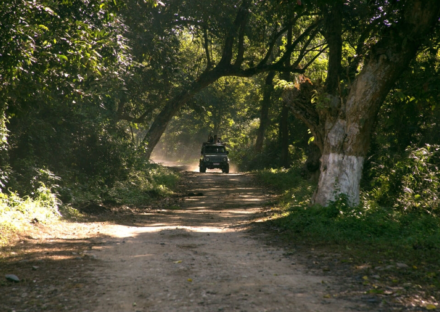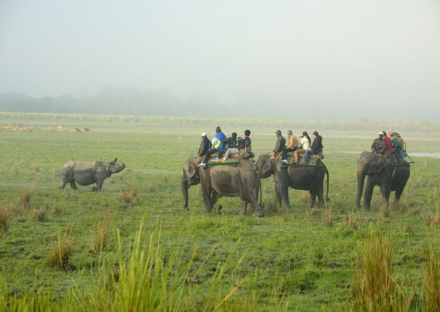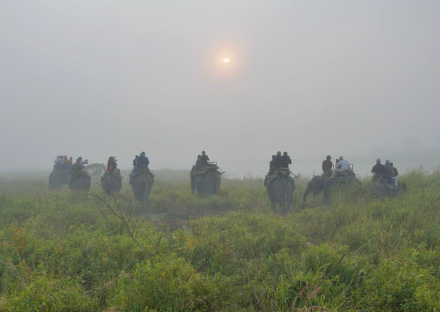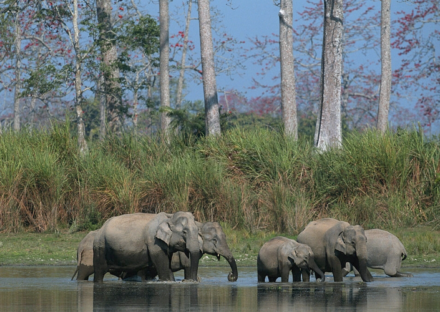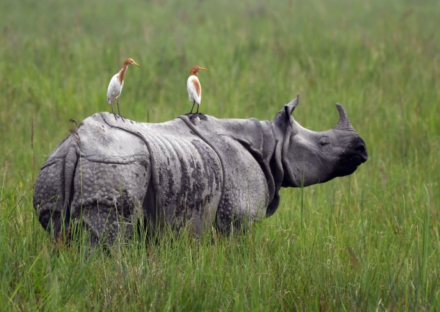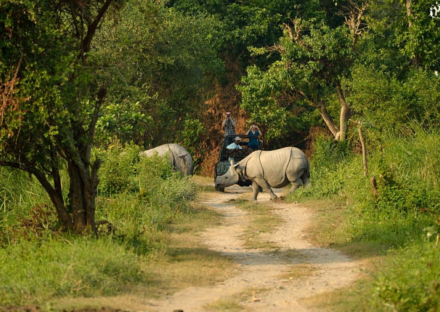Tour overview
Home to the largest population of the one-horned rhino on earth, Kaziranga National Park is one of India’s national treasures in terms of flora and fauna. Located in the state of Assam in North-Eastern India, its total area is shared by the districts of Nagaon, Golaghat and Karbi Anglong placing it roughly at the centre of the state. Approximately around five hours by road from Guwahati, Kaziranga National Park stands tall as the epitome of successful wildlife conservation in India. In 1985, it was awarded the status of a World Heritage Site by UNESCO.
Lying on the floodplains of the mighty river Brahmaputra, rich vegetation covers almost the entirety of Kaziranga National Park. Receiving massive amounts of rainfall each year, at times even crossing dangerous levels, this national park is characterised by tall elephant grass, marshlands and tall tropical broadleaf forests. Here, a wide variety of fauna thrives including the one-horned rhino, Asiatic elephants, wild water buffalo, leopards and Royal Bengal Tigers. Kaziranga National Park is also listed officially as a Tiger reserve and is home to one of the world’s largest population of tigers.
Different types of birds can also be spotted here at the park. A popular migratory location for birds who fly down from the north, one can spot various birds such as the black-nested stork, the lesser white-fronted goose, ferruginous duck and Baer’s pochard duck to name a few. Other notable bird families which can be seen here include the great Indian hornbill and wreathed hornbill among many others.
Safaris can be undertaken both during the day and night during the open tourist season. Elephant rides are also very popular among tourists and wildlife journalists and enthusiasts. Hiking is one such activity which is prohibited here to avoid casualties. Great care is taken at this national park such that tourism and natural sustainability go hand in hand.

